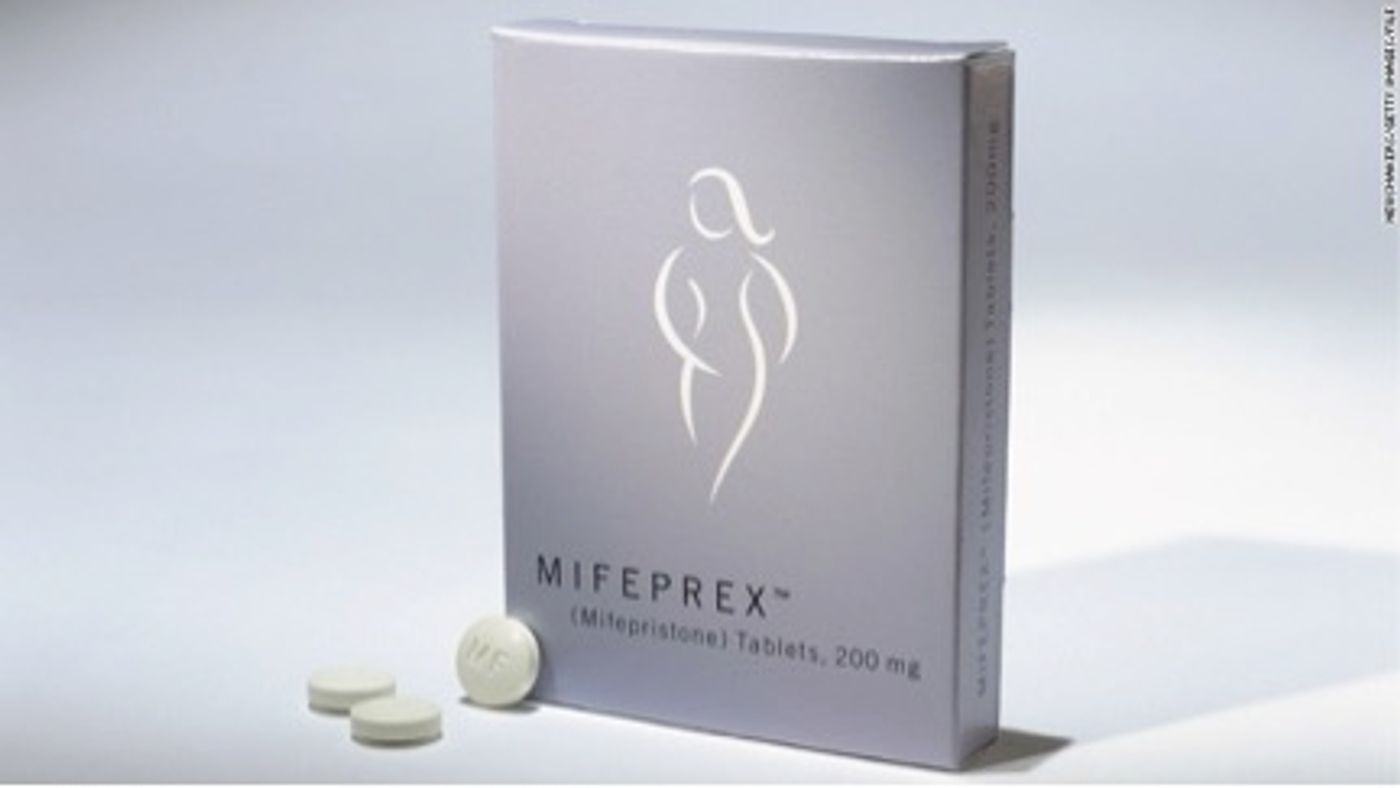The Food and Drug Administration (FDA) yesterday updated its guidelines for the prescription and use of Mifeprex, making it easier and cheaper for women to obtain the abortion medication. Specifically, the
revision lowers the dosage of the pill, which allows it to be taken 70 days into pregnancy instead of 49 days as recommended previously.
Manufactured by Danco Laboratories, Mifeprex is the brand name for mifepristone. This drug works by blocking the progesterone hormone receptors and, in combination with the drug misoprostol, terminates pregnancy. It was developed in 1980 but did not arrive in US markets until 2000 with FDA approval.
"After reviewing the supplemental application (from the drug manufacturer), the agency determined that Mifeprex is safe and effective when used to terminate a pregnancy in accordance with the revised labeling," said the FDA.
With the new guidelines, the recommended dosage is reduced from 600 milligrams to 200 milligrams. This recommendation was supported by data from 22 studies that included nearly 31,000 women, showing that a one third dose of the previous old label was similarly effective in terminating pregnancy. With the reduced dosage, women can also reduce the number of doctor visits, from three to now two. Moreover, mifepristone use during pregnancy was extended from seven weeks to 10 weeks, giving women considerably more time to take the pill.
While easing on the access to the abortion pill, the FDA guidelines still requires medical oversight for use of this drug. "The new label affirms the deadly realities of chemical abortion and underscores the need for in-person patient examination and follow-up care as well as the fact that the abortion drug regimen presents serious risks to women's health," said Anna Paprocki, staff attorney of Americans United for Life. Under the revised label, women are now advised to follow-up between seven and fourteen days.
The decision will affect many American women, especially those living in Texas, North Dakota, and Ohio, as these states strictly adhere to the old federal label standards. These states also legally require the drug to be administered by a licensed clinician, rather than a nurse or a physician assistant.
The new guidelines renewed contentions between abortion rights activists and pro-life groups.
“It appears this has been done for the convenience and the profitability of the abortion industry,” said Randall O’Bannon, the director of education and research for the National Right to Life Committee.
But according to Raegan McDonald-Mosley, Planned Parenthood’s chief medical officer, the new label “represents a significant step forward for science, for women and for health care providers who want to give our patients the highest quality care."
Moreover, Vicki Sapora, president and chief executive of the National Abortion Federation, pointed that the new change “has the potential of opening medical abortion care in more rural areas because it does not have to be given by a surgical abortion provider.”
Additional sources:
CNN,
NY Times









